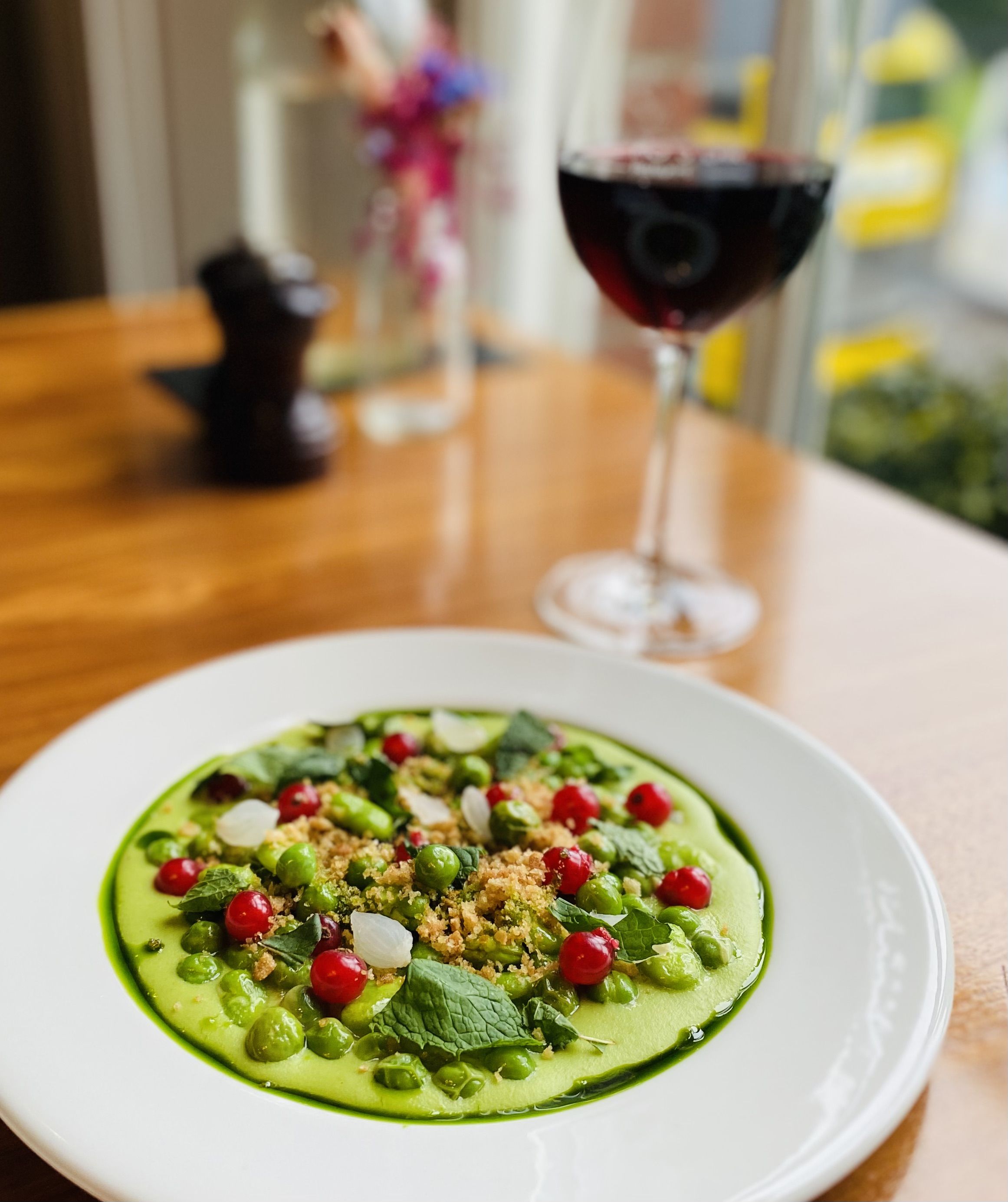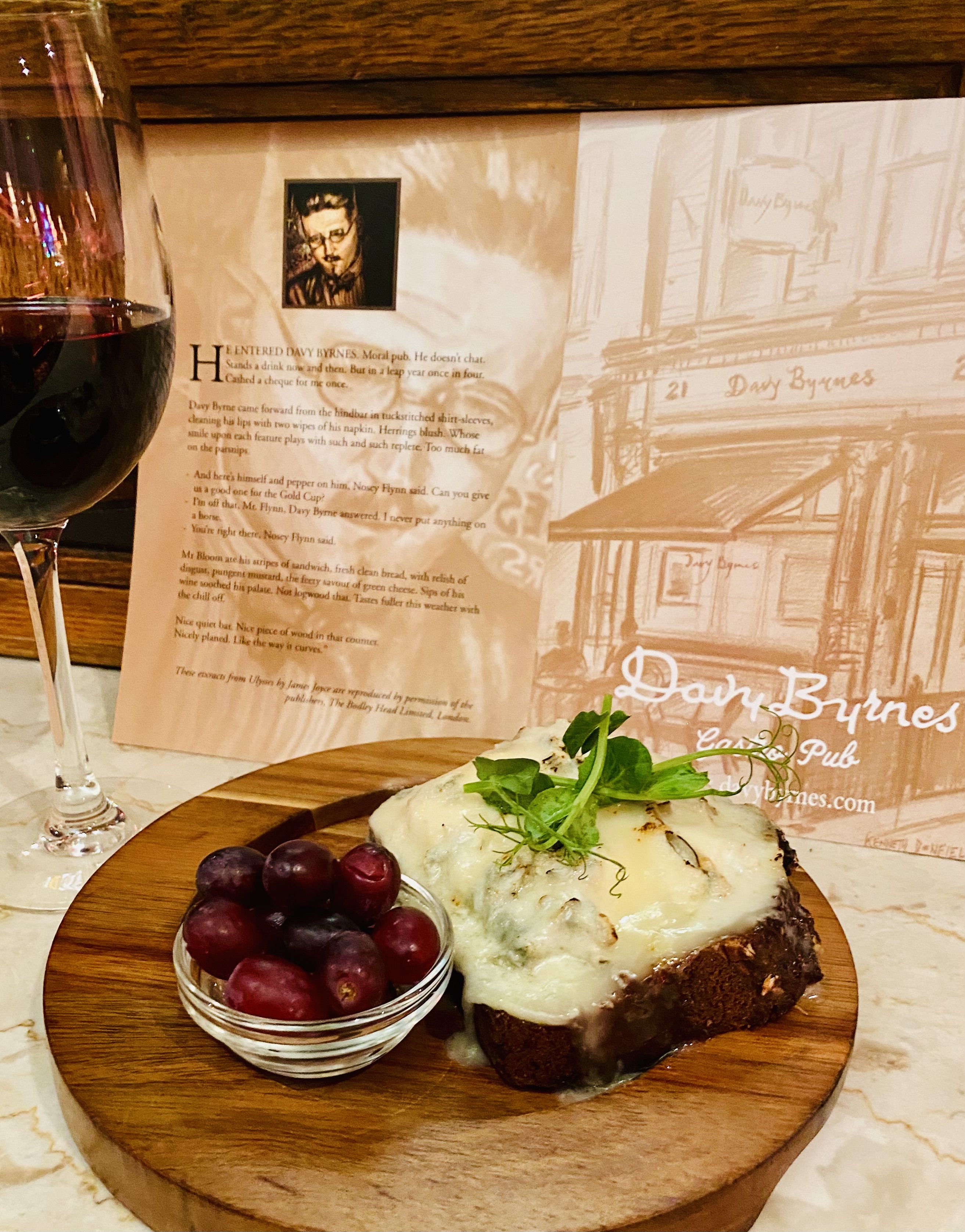I was in Dublin in few weeks ago, too early to celebrate Bloomsday, the annual event that commemorates June 16, 1904, the day immortalized in James Joyce’s novel “Ulysses.” Bloomsday retraces Leopold Bloom’s odyssey around Dublin that day, with Joyce fans there and around the globe holding readings, staging re-enactments, and eating foods associated with the novel. For many, it’s a day long-parade, with serious fans appearing in Edwardian dress (straw bowlers among the most popular), others dressed as Joyce himself or as one of the characters in well-read episodes like Aeolus, Lestrygonians, or Wandering Rocks. “Must” spots to visit are places associated with the author and the novel, including the James Joyce Centre (35 North Great George’s St.; jamesjoyce.ie), which organizes a week-long festival ending on June 16, and Sweny’s, a chemist’s shop just behind the playing fields of Trinity College.
No worries if like me you’re in Dublin too early or too late to celebrate. You can always enjoy a “taste of Joyce” with a visit to Davy Byrnes “moral pub” (21 Duke St. davybyrnes.com) or The Pig’s Ear (4 Nassau Street; thepigsear.ie), a contemporary restaurant with a menu of dishes inspired by Joyce’s works and a handful of other literary and local food sources.
DAVY BYRNES PUB
The literary figure most closely associated with Davy Byrnes Pub is Joyce, a regular visitor who formed a warm relationship with the proprietor. There’s a mention of Byrnes in “Dubliners,” Joyce’s early collection of short stories, but the character who brought fame to the pub is Leopold Bloom.
“He entered Davy Byrnes. Moral pub. He doesn’t chat. Stands a drink now and then. Bet in leap year once in four. Cashed a cheque for me once. . .
“Mr. Bloom ate his strips of sandwich, fresh clean bread, with relish of disgust, pungent mustard, the feety savour of green cheese. Sips of his wine soothed his palate. Not logwood that. Tastes fuller this weather with the chill off.”
Inside the pub, Bloom chats with his friend, Nosey Flynn, and enjoys the now- famous “gorgonzola sandwich and a glass of Burgundy.” On the current menu, the sandwich is called Classic Gorgonzola and Brown Bread (€13) and is offered with a glass of Pinot Noir (€20). I found the sandwich a pleasant surprise when it arrived warm (I ordered it open-faced), the pungent cheese oozing over the thick-cut, malty, Guinness brown bread. The smooth pinot noir, which I generally prefer over Burgundy any way, was a perfect mate. Another take on the classic is a small portion of Deep-Fried Gorgonzola with Burgundy Poached Pear, a tasty nibble at €10.
Other choices on the menu are far less Joyce-inspired (Burren Smoked Salmon, €20; Connemara Oysters, three for €11; Beef and Guinness Pie, €24), so for a visitor to Dublin who prefers a well-drawn pint over well-written prose, Davy Byrnes is a watering hole worth a visit.
THE PIG’S EAR
If you can’t imagine a menu that comes with its own “bibliography” or, at least, a “list of references,” you haven’t dined at the Pig’s Ear. A sleek, stylish space overlooking Trinity College playing fields, Stephen McAllister and Andrea Hussey’s restaurant takes Irish food seriously, offering, according to McAllister, a “concept” that works beautifully. I tucked in there for lunch, anxious to taste McAllister’s culinary interpretations of Joyce’s prose, along with other “reimaginings” of old Dublin dishes: “Jammets” Mixed Grill (€32), which pays homage to Jammets Restaurant, the place to dine in Dublin for more than six decades (1901-1967); “Famine Soup 1847” (€10.50), a much heartier version of a dish served at a soup kitchen in Croppy’s Acre near Kilmainham; or a Plate of Peas & Vinegar (€11.50), a distinctively Joycean dish that I enjoyed with a compatible 2021 Langhe Nebbiolo.
In Joyce’s “Two Gallants,” a short story in “Dubliners,” Lenehan stops at a shop for something to eat:
“He paused at last before the window of a poor-looking shop . . . He was hungry for, except some biscuits which he had asked two grudging curates to bring him, he had eaten nothing since breakfast-time. He sat down at an uncovered wooden table opposite two work-girls and a mechanic. A slatternly girl waited on him.
“How much is a plate of peas? he asked
“Three halfpence, sir, said the girl.
“Bring me a plate of peas, he said, and a bottle of ginger beer.
The girl brought him a plate of grocer’s hot peas, seasoned with pepper and vinegar, a fork and his ginger beer. He ate his food greedily and found it so good that he made a note of the shop mentally.”
On the dessert menu, I was fascinated with the “Gur Cake” Ice Cream offering (€10). I learned that the cake was once a favorite of young inner-city Dubliners on the “Gurr” (skipping school) who enjoyed the inexpensive sweet. McAllister explained that the original cake was made from left-over/stale bread or cake crumbs mixed with spices, dried fruit, brown sugar, and tea. The mixture was baked between a bottom and top crust of pastry and then cut into squares.
McAllister said, “We used to serve the cake in small portions but found it a bit thick for everyone’s taste, so we lightened it up with an ice cream version that has all the same flavors (spices, fruits, tea).” For additional nostalgia, he serves it over corn flakes!

PLATE OF PEAS AND VINEGAR
Serves 4
The contrasting-but-complimentary flavors of the sweet peas, tangy red currants, acidic pearl onions, and savory mint offer balanced taste and texture in every bite.
For the pea puree
10 ounces frozen peas
Milk, to cover
Salt
Juice from half a lemon
1. Put the peas in a medium saucepan. Add enough milk to just cover. Bring gently to a boil. Simmer for 10 minutes, or until the peas are tender but still bright in color.
2. Strain the peas, reserving the milk. Transfer the peas and 1 tablespoon of the reserved milk to a food processor. Purée for 10 to 15 seconds, or until the peas are smooth. Season with salt and lemon juice. Keep warm.
For the pea emulsion
1 tablespoon butter
1 teaspoon water
2 ounces fresh peas
2 ounces broad beans or edamame
Salt
Redcurrants, for garnish
1/2 cup fresh breadcrumbs, toasted
Pickled pearl onions, cut in half, for garnish
Fresh mint, for garnish
Chive or extra virgin olive oil, for drizzling
1. In a small saucepan, combine the butter, water, peas, and beans or edamame. Cook for about 5 minutes. Gently mash to form a rough emulsion. Season with salt.
2. To serve, divide the pea purée onto four warmed plates or shallow bowls. Spoon the pea emulsion on top, making sure not to use too much of the liquid.
3. Top with redcurrants, onions, and breadcrumbs. Garnish with mint; drizzle with chive or olive oil.
Margaret Johnson’s “Recipes” page alternates with “Ireland Hopping: Adventures in Food, Drink, and Travel.” For further details on her work, or to order a signed cookbook, visit irishcook.com.








